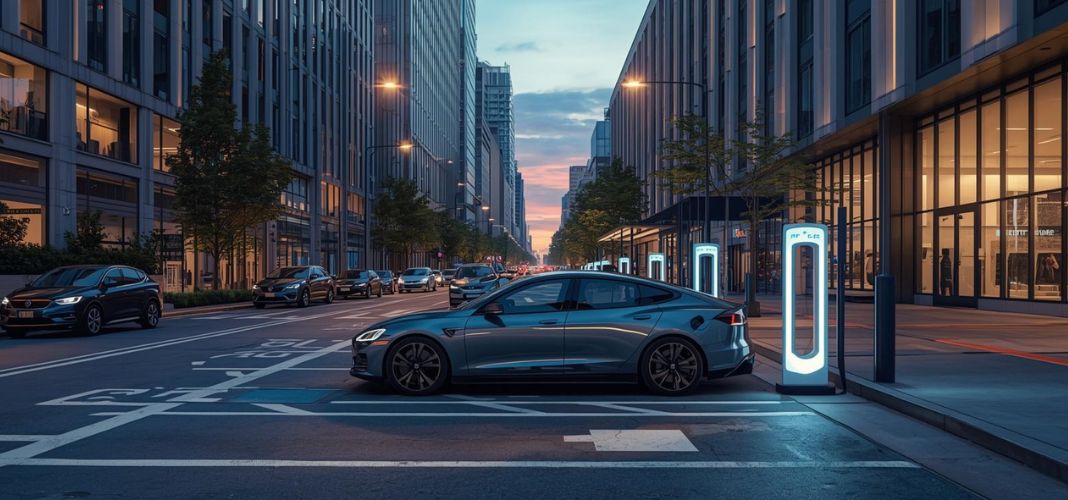As electric vehicles (EVs) gain traction worldwide, cities face a crucial challenge: developing charging infrastructure that’s scalable, efficient, and equitable. Strategic Level 2 EV charger installation offers the most practical path forward. It bridges the gap between costly, high-speed DC fast chargers and the limited accessibility of home outlets — creating an ecosystem where clean transportation thrives within urban landscapes.
The Strategic Role of Level 2 Charging in Smart Cities
The majority of EV charging happens where vehicles are parked for extended periods — at homes, offices, and public venues. Level 2 EV charger installation caters precisely to this behavior. These chargers can provide 10–25 miles of range per hour, fully recharging most vehicles during a standard workday or overnight stay.
This makes them ideal for integration into residential complexes, office campuses, and commercial hubs. By positioning chargers at familiar destinations, cities can promote EV adoption naturally — without overwhelming the grid or driver convenience.
Lower Costs and Lighter Grid Load
Unlike fast chargers that demand substantial grid upgrades, Level 2 chargers are more cost-effective to install and operate. They draw moderate power and can leverage smart grid systems that schedule charging during off-peak hours.
According to a McKinsey Global Institute report, optimizing charging schedules through automation can reduce peak-hour strain by up to 30%, improving grid stability and lowering energy costs for utilities and drivers alike. This smart load management ensures that clean mobility doesn’t come at the expense of energy reliability.
Building a Smart and Equitable Charging Network
To create an inclusive charging network, cities need a data-driven deployment strategy. Geographic Information System (GIS) tools can help identify high-demand areas based on population density, travel routes, and existing energy infrastructure.
Key placement opportunities include:
- Residential zones lacking private garages
- Commercial districts with frequent short stops
- Public spaces like parks and libraries for community access
- Corporate workplaces supporting employee EV use
This approach ensures that access to EV charging isn’t a privilege but a public utility — supporting both urban dwellers and commuters.
Smart Grid and Renewable Integration
Integrating chargers with smart grid technology enables dynamic load management, where charging speeds automatically adjust based on real-time grid conditions. Future-ready systems are also exploring Vehicle-to-Grid (V2G) capabilities, allowing parked EVs to send stored energy back to the grid when needed.
Pairing Level 2 EV charger installation with renewable power sources, such as solar microgrids, can dramatically reduce urban carbon footprints. In this model, every charge session not only powers vehicles but also contributes to a cleaner, more resilient energy ecosystem.
Policy and Partnerships for Sustainable Mobility
Governments and private stakeholders both play vital roles in scaling EV infrastructure. Key measures include:
- Streamlined permitting: Simplify regulatory processes to reduce setup delays
- Financial incentives: Offer tax breaks or grants for commercial and residential charger installations
- EV-ready building codes: Mandate new constructions to include electrical capacity for future chargers
Public-private partnerships can also help fund charging stations in underserved neighborhoods, bridging the equity gap in urban electrification.
The Road Ahead — Empowering the Future of Urban Mobility
A forward-looking Level 2 EV charger installation strategy is about more than hardware — it’s about connecting technology, people, and policy into one seamless system. The benefits are far-reaching:
- Grid optimization through balanced load management
- Reduced emissions and improved air quality
- Enhanced convenience for EV drivers
- Economic growth through green infrastructure investment
By taking a holistic, data-driven approach, cities can ensure that EV adoption becomes a catalyst for sustainable progress rather than a logistical challenge.
Conclusion
Empowering smart cities with strategic Level 2 EV charger installation isn’t just about powering vehicles — it’s about fueling a transformation. The cities that invest wisely today will lead the next era of sustainable urban mobility, where every charge represents not just energy transfer, but progress toward a cleaner, smarter, and more connected world.


